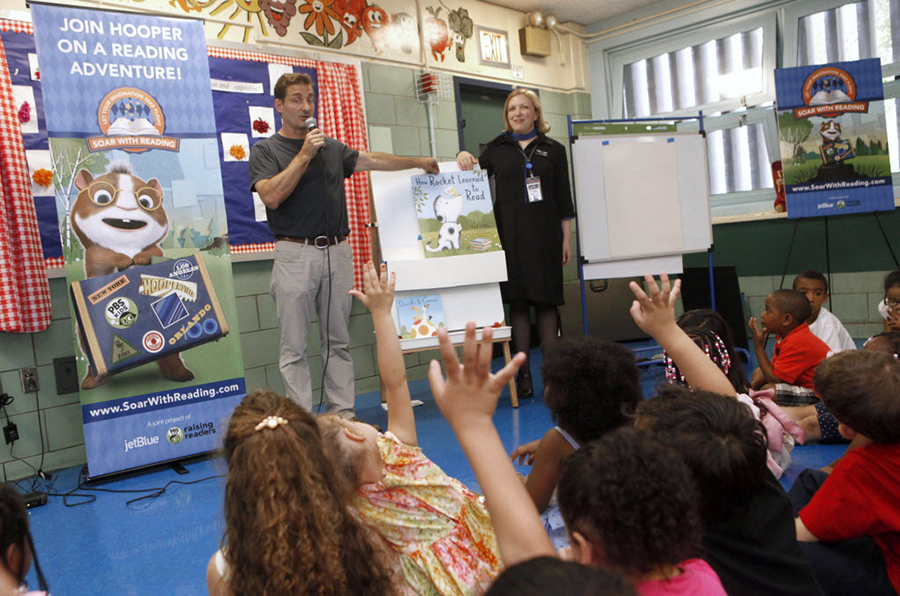Want your sons to read? Tell them not to.
Loading...
A 2010 study finds boys lagging behind girls on standardized reading tests in all 50 states. A 2014 report finds that almost twice as many girls read daily as boys. And a 2015 report finds girls score higher than boys on tests of reading ability, a gap that has existed for decades.
In youth education and publishing, it's an established fact: boys don't read as much as girls.
British novelist Nick Hornby knows a thing or two about this - he has boys of his own.
“I have boys, and boys are particularly resistant to reading books," he told the UK's Daily Telegraph.
His novel solution? Some carefully placed reverse psychology.
“I had some success recently with Sherman Alexie’s great young adult novel ‘The Absolutely True Diary Of A Part-Time Indian’ – I told my son it was highly inappropriate for him, and one of the most banned books in America," he said. “That got his attention, and he raced through it.”
Perhaps that's no surprise, says Lucy Macnab, co-founder, with Hornby, of Ministry of Stories, a creative writing and mentoring center in London. She says children are drawn to "gruesome and gory" details in books.
"The most popular and long lasting fairy tales are really gruesome and gory in some ways and I think that’s what inspires curiosity in children," she says. "As long as they are curious, you’ve got them hooked.”
Why do boys lag behind girls in reading? A number of theories attempt to answer the question.
According to one theory, girls' brains are more verbally oriented, often making reading skills easier for them, while boys' brains are visually oriented. Another theory is that boys are more physically restless than girls.
One theory suggests parents read more to girls than to boys. In fact, according to one study, young girls are more likely to be taken to libraries than are boys, are more likely to own books than are boys, and are more likely to be read to for longer periods of time than boys, according to NPR.
Yet another study suggests "girls are more likely to enjoy relating to characters in books and often equate fiction with reading for pleasure," which may lead girls to be more inclined to read and enjoy literary fiction.
Given these theories, Hornby, in fact, is on to something. Some educators advise encouraging boys to read using alternate, even counterintuitive methods, like Hornby's.
One way is for parents, and especially dads, to set an example by reading a variety of materials - books, magazines, newspapers, and more.
"Don’t reject what boys are reading," says school ratings site Great Schools. "Expand your definition of reading. Magazines, blogs, websites, comic books, and other materials are often more interesting to boys than classic novels because they feature shorter chunks of text, which are more appealing to many boys."
Along the same lines, reading doesn't just have to take place in a book - if boys are more inclined to read on a tablet or listen to an audiobook, let them.
Finally, says Great Schools, leverage their natural interest - whether it's frogs, cars, or space travel, by guiding them to books on the subject.






